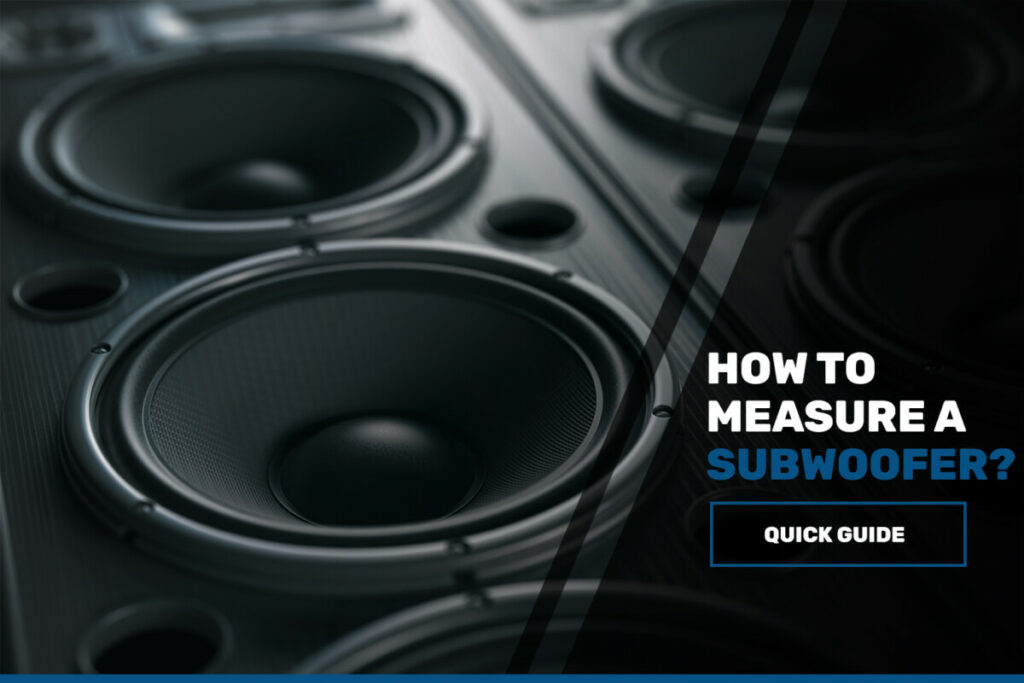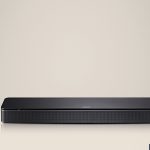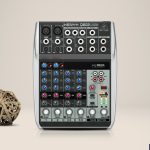
Are you trying to figure out the subwoofer’s size?
In this article, I’ll show you how to measure your subwoofer’s width, height, and depth so you can determine whether it will fit in the spot you choose.
You can measure your subwoofer’s size by the end of this article to see if it suits your room after I’ve explained it in simple words and given recommendations on the best tools to use, like a tape measure.
It is really easy and enjoyable, and it will save you a ton of effort. Start measuring your subwoofer now to get the job done right!
Which Parts of a Subwoofer Should I Measure? – The Basics
To make sure that a subwoofer will perform as intended and to its full potential, it is essential to measure its physical dimensions so you know how you’ll place it and where.
It’s important to know the speaker diameter since it tells you how big the subwoofer’s driver will be and how much room it will take up in your room.
On the other hand, the cutout diameter measurements is important since it indicates the size of the hole that must be made in your room for the subwoofer to fit.
Another significant element that has an impact on overal performance is where the subwoofer driver is placced.
Both the mounting height and mounting depth measurements provide information about the driver’s height in relation to the room.
These measurements are important because they determine how the drriver is positioned in relation to the space, which affects how well the subwoofer will perform.
Before buying or installing a subwoofer, you can make sure that it will fit well in the intended place and function at its best by taking into account and measuring these factors as this will improve your audio experiance and help you make the most of your subwoofer.
Maybe you’re trying to place your subwoofer behind the tv, or you want to place your subwoofer behind a couch, whatever the case, measuring it would be wise.
The Right Physical Measurements of Subwoofers

Measuring a subwoofer is no joke, folks! But don’t worry, with the right tools, you’ll have the measurements of a pro in no time. All you need is a tape measure!
First, let’s start with the diameter of the subwoofer cone (speaker driver). Just stretch out that tape measure like a snake and wrap it around the cone, from one outer edge to the other. Imagine it’s a hug from a giant, that’s how you measure it!
Next, let’s measure the depth of the subwoofer enclosure. Place the tape measure at the front of the enclosure (where the speaker driver is) and measure to the back, like you’re measuring a diving bord for your cannonball.
If your subwoofer has a port, don’t forget to measure that too! It’s like measuring a straw for your giant soda, you want to make sure it’s the right size.
Finally, measure the overall widht, height and depth of the subwoofer enclosure. It’s like measuring a giant box for a surprise party, you want to make sure it fits in the room.
Just remember, these measurements should be taken in inches or millimeters, depending on your prefrence. And always double check your measurements, accuracy is key!
Now, with all these measurements in hand, you’ll be able to build the perfect subwoofer setup and have a blast while doing it!
Size Chart of Subwoofers
When it comes to subwoofers, size matters! And just like Goldilocks and the three bears, you want to make sure you choose the right size for your needs. There are four main types of subwoofers, each with its own unique size range, let’s take a look at them:
- Compact subwoofers: These tiny fellas are for those who want a little boom without taking up too much space. They’re usually around the size of a large bowling ball, with a cone diameter of 8 inches or les and an enclosure volume of around 0.2 to 0.5 cubic feet.
- Mid-size subwoofers: These are the middle children of the subwoofer world. They’re slightly larger than the compact subwoofers and are perfect for those who want a bit more oomph without going overboard. They’re usually around the size of a small refrigerator, with a cone diameter of 10 to 12 inches and an enclosure volume of around 0.5 to 1.0 cubic feet.
- Large subwoofers: These are the big guns of the subwoofer world. They’re for those who want to shake the foundation of their house and make the neighbors hate them. They’re usually around the size of a small car, with a cone diameter of 12 to 15 inches and an enclosure volume of around 1.0 to 2.0 cubic feet.
- Subwoofers with built-in amplifier: These are the king of the subwoofer world and are for those who want to go all out with the bass. They’re usually around the size of a small elephant, with a cone diameter of 15 inches or larger and an enclosure volume of around 2.0 cubic feet or more.
It’s important to note that these are general size ranges and there can be variations among different manufacturers and models of subwoofers.
Aditionally, it’s also important to consider the room acoustics and the intended use of the subwoofer when choosing the size of the subwoofer. But most importantly, choose the size that makes you happy!
Why Measure a Subwoofer?

Sometimes you may also be wondering if a subwoofer is worth it or not, so why measure a subwoofer? Measuring the physical dimensions of a subwoofer is like taking the measurements of a hulking, bass-loving bodybuilder. It’s essential for several reasons, let’s take a look at them:
One of the main reasons is to ensure proper fit and compatibility with the intended location. You don’t want to end up with a subwoofer that’s too big for your living room or too small for your car. Knowing the physical dimensions of the subwoofer will allow you to make sure that it will fit in the desired location, like a hand in a glove.
Another reason for measuring the physical dimensions of a subwofer is to determine the subwoofer’s overall performace.
The size of the subwoofer, including the cone diameter and enclosure volume, will affect the subwoofer’s frequency response and output level, just like the size of the muscle affect a bodybuilder’s performance.
Measuring these dimensions will provide insight into the subwoofer’s overall performance and how it will impact the overall sound system.
Additionally, measuring the physical dimensions of a subwoofer can also be important for aesthetic reasons, as the size and shape of the subwoofer can affect the overall look of a room or car.
Knowing the physical dimensions of the subwoofer will allow you to make sure that it will blend seamlesly with the overall design of the space, like a beautiful sculpure.
In summary, measuring the physical dimensions of a subwoofer its important for determining proper fit and compatibility, evaluating overall performace, and for aesthetic reasons.
Final Words
So, as you can read everything above, the exact measurements of a subwoofer are related to the physical size they have and the sound performance as well.
Always make sure to measure them properly, and if you think of purchasing new ones, make sure to find everything you need to know!
Mix & Mastering
I love to get my hands on all sorts of audio equipment, from headphones and speakers to audio interfaces. I love putting these products through their paces and seeing what they can do.





